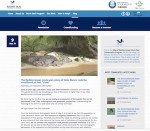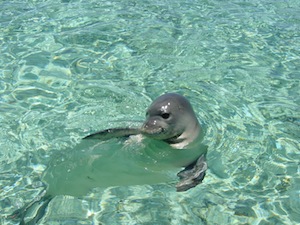COMMENT
 In declaring the Mediterranean monk seal colony at Cap Blanc in Mauritania/western Sahara “closed” [see blog], is Spanish NGO CBD-Habitat edging ever closer to resurrecting a plan that would see seals artificially translocated to other areas? The theory is that this would minimise the risk to the colony posed by mass mortality events, while helping to recolonise areas historically occupied by the species. Unfortunately, as earlier abandoned attempts to translocate or captive breed monk seals proved, the devil is in the detail. Continue reading “Translocation déjà vu”
In declaring the Mediterranean monk seal colony at Cap Blanc in Mauritania/western Sahara “closed” [see blog], is Spanish NGO CBD-Habitat edging ever closer to resurrecting a plan that would see seals artificially translocated to other areas? The theory is that this would minimise the risk to the colony posed by mass mortality events, while helping to recolonise areas historically occupied by the species. Unfortunately, as earlier abandoned attempts to translocate or captive breed monk seals proved, the devil is in the detail. Continue reading “Translocation déjà vu”


 The Final PEIS for Hawaiian Monk Seal Recovery Actions was made available for public review from April 11 to May 12, 2014. The Preferred Alternative identified in the Final PEIS is Alternative 3, Limited Translocation. The Preferred Alternative does not include any translocation option that involves moving seals born in the Northwestern Hawaiian Islands and releasing them in the main Hawaiian Islands. The Final PEIS is available at:
The Final PEIS for Hawaiian Monk Seal Recovery Actions was made available for public review from April 11 to May 12, 2014. The Preferred Alternative identified in the Final PEIS is Alternative 3, Limited Translocation. The Preferred Alternative does not include any translocation option that involves moving seals born in the Northwestern Hawaiian Islands and releasing them in the main Hawaiian Islands. The Final PEIS is available at: In 2010 and 2011 NOAA Fisheries staff began to observe a nine-year old monk seal, KE18, attacking newly weaned and juvenile seals at Kure Atoll in the NWHI; causing injuries including lacerations, scratches and puncture wounds on this critical component of the monk seal population. KE18 seriously injured 10 of the 13 pups and an additional three juveniles during the 2010 and 2011 field camps on Kure Atoll. When KE18 transited to Midway Atoll there were two unexplained deaths during his time there.
In 2010 and 2011 NOAA Fisheries staff began to observe a nine-year old monk seal, KE18, attacking newly weaned and juvenile seals at Kure Atoll in the NWHI; causing injuries including lacerations, scratches and puncture wounds on this critical component of the monk seal population. KE18 seriously injured 10 of the 13 pups and an additional three juveniles during the 2010 and 2011 field camps on Kure Atoll. When KE18 transited to Midway Atoll there were two unexplained deaths during his time there.